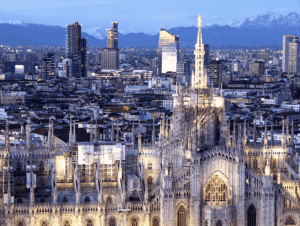The South Florida real estate market has long been a magnet for investors, developers, and high-net-worth individuals, and 2025 promises to be another transformative year. As the founder of an international real estate firm specializing in bridging the markets of Italy and the U.S., with a focus on New York, Miami, South Florida, Milan, and Florence, I have witnessed the region’s evolution firsthand. Drawing on recent industry insights and trends, this article explores what we can expect in 2025, from emerging opportunities to persistent challenges.
The Post-Pandemic Landscape: A New Normal
The COVID-19 pandemic reshaped South Florida’s real estate market, triggering a wave of migration that drove up property prices, rents, and construction activity. While the initial frenzy has subsided, the region’s appeal remains strong, bolstered by its favorable tax policies, warm climate, and status as a global business hub.
In 2025, South Florida is expected to continue outperforming other major U.S. metros, though the market will face new dynamics:
- Slower but Steady Growth: The breakneck pace of price increases and rent hikes seen during the pandemic will likely moderate, but demand will remain robust.
- Increased Competition: As more developers and investors flock to the region, competition for prime properties and development sites will intensify.
- Evolving Buyer Preferences: Remote work and lifestyle changes will continue to influence buyer behavior, with a focus on properties that offer flexibility, luxury, and proximity to amenities.
Multifamily Market: Balancing Demand and Supply
The multifamily sector has been a cornerstone of South Florida’s real estate boom, but 2025 will bring both opportunities and challenges.
Key Trends to Watch:
- Rent Stabilization: The completion of thousands of new units will lead to a more balanced market, with rent growth stabilizing after years of rapid increases.
- Adaptive Development Strategies: Developers may pivot from rental apartments to condos in response to shifting demand, particularly in high-demand areas like Miami Worldcenter.
- Rising Costs: Construction expenses and financing costs will remain elevated, putting pressure on profit margins and prompting developers to seek innovative solutions.
Despite these challenges, the multifamily market is poised for long-term growth, driven by South Florida’s continued appeal to renters and investors alike.
Developers’ Perspectives: Innovation in the Face of Challenges
Developers in South Florida are navigating a complex landscape marked by rising costs, labor shortages, and evolving market demands.
Key Challenges:
- Labor Shortages: Finding skilled subcontractors capable of delivering high-quality construction remains a persistent issue.
- Rising Costs: The cost of land, materials, and insurance continues to climb, impacting project feasibility.
- Policy Uncertainty: Proposed tariffs and economic policies under the new administration could further strain developers’ budgets.
Opportunities for 2025:
- Focus on Renovations: With ground-up construction becoming less economically viable, developers like Todd Michael Glaser are shifting their focus to renovating existing homes.
- Mixed-Use Developments: Neighborhoods like Brickell and downtown Fort Lauderdale are ripe for mixed-use projects that combine residential, retail, and office spaces.
- Sustainability: Green building practices and energy-efficient designs are becoming increasingly important to buyers and renters, offering a competitive edge to developers who prioritize sustainability.
Residential Market: Luxury and Branded Condos Continue to Shine
The luxury residential market in South Florida shows no signs of slowing down in 2025, with branded condos and high-end properties leading the way.
Key Trends:
- Branded Condos: Developments featuring partnerships with globally recognized brands will continue to attract affluent buyers, particularly in Miami and Miami Beach.
- Inventory Constraints: Limited supply will keep competition fierce, driving prices to new heights and pushing developers to innovate.
- The Citadel Effect: The relocation of Ken Griffin’s Citadel and other financial firms to Brickell will sustain demand for luxury condos, with properties like Cipriani Residences commanding premium prices.
Industry Evolution:
- Brokerage Innovation: Residential brokerage leaders are advocating for changes to commission structures and greater strategic flexibility to better serve sellers.
- Technology Integration: The use of virtual tours, AI-driven market analysis, and other tech tools will become increasingly prevalent, enhancing the buying and selling experience.
Office Market: A Focus on Quality and Flexibility
The office sector in South Florida is undergoing a transformation, with a growing emphasis on high-quality spaces and flexible work environments.
Key Insights:
- Flight to Quality: Companies will continue to prioritize premium office spaces that align with their brand and employee needs, driving demand for Class A properties.
- Development Pipeline: Approximately 3 million square feet of office space is in the development pipeline, signaling confidence in the market’s long-term potential.
- Hybrid Work Models: The rise of hybrid work will shape office design and location preferences, with a focus on spaces that support collaboration and flexibility.
While optimism abounds, some caution that the market may be over-exuberant. South Florida has yet to fully establish itself as a tech hub, and continued investment in infrastructure and talent will be critical to sustaining growth.
Looking Ahead: South Florida’s Enduring Appeal
As we look to 2025, South Florida’s real estate market remains a beacon of opportunity, offering unparalleled potential for growth and innovation.
What to Expect:
- Continued Demand: The region’s appeal to buyers, renters, and businesses will remain strong, driven by its unique combination of lifestyle, tax advantages, and economic opportunities.
- Increased Competition: As more players enter the market, differentiation and innovation will be key to success.
- Focus on Sustainability: Green building practices and energy-efficient designs will become increasingly important, reflecting broader societal trends.
For developers, brokers, and investors, the key to thriving in this dynamic market lies in adaptability, creativity, and a deep understanding of the forces shaping South Florida’s real estate landscape.



